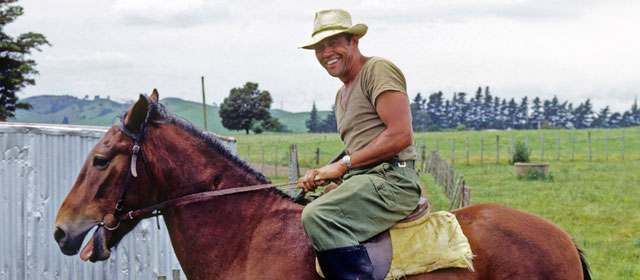Story summary
Early gardens
Māori cultivated gardens around New Zealand in the centuries after they arrived. They grew crops that their ancestors had carried across the Pacific: kūmara (sweet potato), taro, hue (gourds) and uwhi (yams).
European plants and animals
Explorers and missionaries also brought plants and animals to New Zealand, and the first plough arrived in 1820. Māori quickly adopted European agriculture and began to run a thriving trade with settlers. Soon they were exporting crops such as potatoes and wheat.
Land ownership
Traditionally, Māori land was owned by the group, not by individuals. Continued occupation, known as ahi kā, the long-burning fires, linked people to particular areas.
The settler government made a law in 1862 to convert Māori land ownership into individual blocks with named owners. Over time, more and more people inherited title to land. People had part ownership of different pieces of land and had no way to develop them. Often land was sold because owners thought the situation was hopeless.
Apirana Ngata
Ngāti Porou leader Apirana Ngata played a big role in Māori farming in the 20th century, especially in his own tribal area. He encouraged land owners to join together and form trusts or incorporations to run farms. These organisations could get funds to develop land.
Sheep and dairy farming flourished on the East Coast – by 1927 there were around half a million sheep in the Waiapu .
Ahuwhenua trusts
There are over 5,000 ahuwhenua (farming) trusts. These are popular because owners retain their title to the land. Ancestral land is important to Māori. It is their tūrangawaewae, their place to stand, and provides a sense of belonging. Although they may never live there, the land remains a symbol of their identity. Almost half of Māori land is held by trusts.
Land incorporations
With land incorporations, owners become shareholders and receive dividends – 13.7% of Māori land is run by incorporations. Some are large-scale: Parininihi Ki Waitōtara Incorporation in Taranaki runs a $50 million dairy farming operation.
One-fifth of Māori land is not managed by trusts or incorporations. Some of it is leased from the owners.
Contributing to the economy
Māori farm 720,000 hectares of land, and more than 15% of the country’s sheep and beef exports come from Māori-owned farms.





